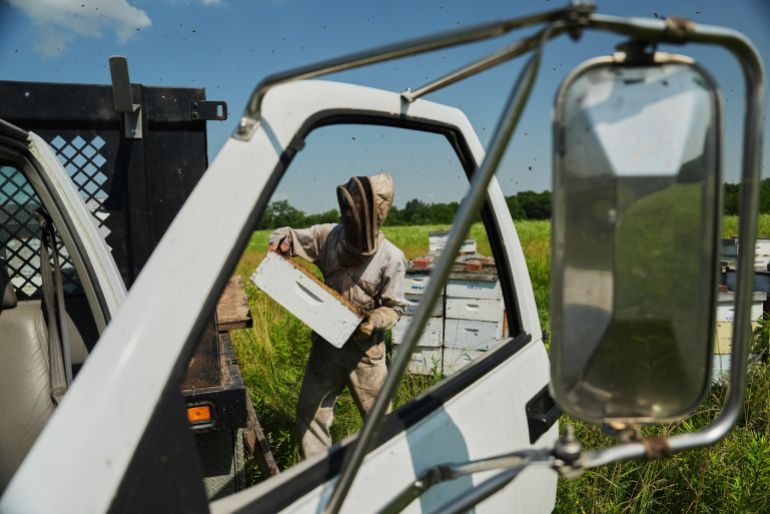Isaac Barnes’ face is covered in sweat as he transports boxes of honeycomb from his hives to his truck. As the evening temperatures rise, it feels like a sauna.
Barnes had more heat than his bees, though. Their body temperatures can reach 15 degrees Celsius (27 degrees Fahrenheit) above the air in their vicinity. Scientists are attempting to understand the effects of rising global temperatures on managed and wild bees as they pollinate crops, produce nectar, make honey, and reproduce.
According to a study published last year, they noticed that flying bees that gather nectar kept their body temperature below dangerous levels. Bees may retreat to a cooler setting, such as the shade or their nest, as do humans, according to scientists.
Bees actually do the same thing to avoid the heat, according to Jon Harrison, an Arizona State University environmental physiologist and one of the study’s authors.
Most bees are generally heat-tolerant, but some experts believe that their ability to withstand disease and produce food might increase as the weather warms. The global decline of bees and other pollinators may be a result of habitat loss, increased use of pesticides, diseases, and a lack of forage for both managed and wild bees.
Beekeepers lost almost 56% of their managed colonies, the highest loss since the survey’s inception, according to preliminary findings from the annual US Beekeeping Survey, which was released earlier this year.
Almost all of the United States’ managed honeybee colonies are used to pollinate crops like blueberries, cherries, and almonds. Less pollination and lower yields can be caused by lower pollinators.
As Isaac Barnes gathers boxes to bring back to his farm for honey production, thousands of honeybees fly around in Ohio’s hives as they fly around. A few of his bees nest nearby on milkweed flowers, a rare example of plant diversity in a region rich in maize and soya bean fields.
One of the challenges that heat can present to his 500 honeybee hives is fending off parasitic mites that threaten the bees, according to Barnes, who runs Honeyrun Farm with his wife Jayne. He is unable to apply formic acid, an organic compound that kills mites, when the temperatures are too hot. The bees could perish if it is applied too hot.
Nearly a third of the 400 hives they sent to California last year were lost in the effort to pollinate commercial almond groves. Barren believes that those hives may have been in poor health prior to pollination because they couldn’t prevent mites during the hotter months.
People have only recently become aware of the global pollinator decline, according to Arizona State University’s Harrison. There are no conclusive evidence about how pollinators are declining as a result of climate change and heat stress.

The US Geological Survey Bee Lab, which supports the collection, monitoring, and natural history of the nation’s wild bees, would be eliminated under the proposed budget of the Trump administration. Bee research grants that are awarded are also in jeopardy.
Oregon’s Jeff Merkley, a senator from the US, said pollinators in “grave danger” and would fight for federal funding. He claimed that pollinators help with the planet’s health, as well as the food we consume.
The Trump administration’s reckless budget proposal, which would eliminate funding for important research aimed at saving important pollinators, was addressed in a statement to The Associated Press news agency.
If his federal funding is cut, Harrison predicted that his research on this subject would be put to a halt. In addition, it would be more difficult for scientists to study the disappearance of bees and other pollinators and to improve their methods of preventing these losses. The cost of fruits, vegetables, nuts, coffee, and chocolate may rise or decrease as a result of not being able to control these pollinator deaths.
Source: Aljazeera

Leave a Reply